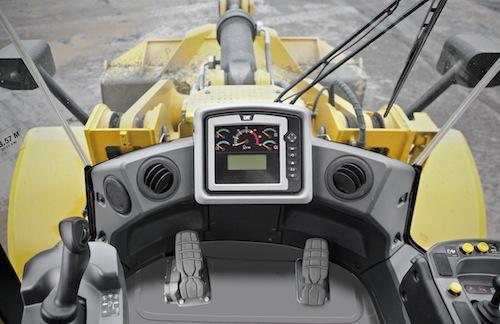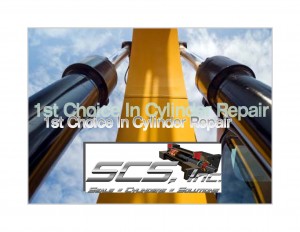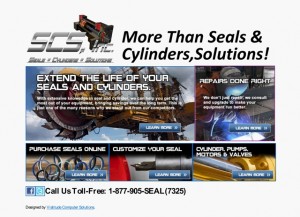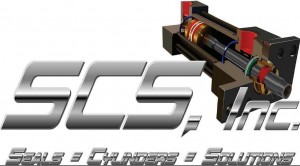Fuel Efficiency Focus for Mobile Hydraulics

Fuel efficiency is rising as a design trend and a primary goal for manufacturers of mobile hydraulic equipment, particularly construction equipment such as excavators, skid steers, and backhoes. Along with electrohydraulics advances that are delivering unprecedented levels of controllability, optimizing new systems for energy efficiency is becoming a major design priority and focus.
According to Dr. Kim Stelson, director at the Center for Compact and Efficient Fluid Power (CCEFP), a soon-to-be-released Department of Energy study highlights energy use for fluid power applications. The study shows that between 2.3 percent and 3.1 percent of total energy use in the US is transmitted by fluid power, with an average efficiency of 21 percent. But the study also identifies two large components that dominate fluid power energy use in the US: mobile hydraulics and industrial pneumatics.
The ability to integrate these systems and maximize power use has allowed Caterpillar to downsize its engines and move to more power-dense solutions, which means burning less fuel. To make systems both simple and more effective, the company has completely changed the way the operator interacts with the machine itself in the new K Series wheel loaders.
“The K Series is the only wheel loader in the market that is solely joystick operated, and we are soon planning to  introduce a new XE power train option that is a game changer, as well,” said Weiss. “The hydromechanical transmission system that we have developed in the XE model is producing phenomenal fuel savings and simplicity for operators, who can operate the machine’s propulsion with merely a stop pedal, a go pedal, and the steering joystick.”
introduce a new XE power train option that is a game changer, as well,” said Weiss. “The hydromechanical transmission system that we have developed in the XE model is producing phenomenal fuel savings and simplicity for operators, who can operate the machine’s propulsion with merely a stop pedal, a go pedal, and the steering joystick.”
Competing machines have used “thumb sticks,” he said, but their implementation and operation is not widely accepted in many applications that involve roading the machine. With the Cat K Series medium wheel loaders and innovative work with the joystick and electrohydraulic systems, Caterpillar can remove the steering wheel and provide exceptional responsiveness through an exclusive force feedback system. As the machine’s ground speed increases, for example, the integrated force feedback through the joystick improves steering control and comfort.
“The new design has improved safety not only because visibility is much better without the steering wheel, but because it also allows the operator to become much less fatigued, especially in truck-loading applications,” said Weiss. “Before, the operator would need to turn the steering wheel left and right, then dump, and repeat the process all day.”
A key for the electrohydraulic systems within the new XE integrated power train is that the machine can do a lot of thinking for the operator. For example, if the operator stops while the machine is moving up a grade, the machine doesn’t start rolling backward. The system knows that would be an uncommanded movement. An operator who wants to go backward can select a transmission direction change. Otherwise, the system stays put on the grade.
Another example is intelligent braking when going downhill. The system saves energy by braking on its own to maintain constant ground speed. The design goal was to think through various operating conditions, get the machine to understand what it is doing, and modify its behavior to produce the most efficient performance.
Energy recovery is also accomplished on the machine when the transmission changes direction,” said Bryan Vogt, engineering manager for Caterpillar Medium Wheel Loader Machine Performance & Controls. “Instead of putting energy through the braking and fuel systems, the machine momentum can be recovered as free energy to power implements or the cooling fan. The energy is recaptured for use in the hydraulic system so, if the implements are lifting a load, that energy and the reversal of the transmission is used in the hydraulic system without fuel burn.”
Weiss said Caterpillar is continuing to explore and expand its designs in this area, which is a key element in terms of the next steps in saving customers’ money. The question is how we can continue to store and recover energy. The goal is to lower overall fuel consumption and increase efficiency without sacrificing power or production. Furthermore, looking at emissions levels, the amount of soot generated by a typical engine can be reduced. Because the system is using less fuel, there is less need to burn off the soot or particulates, which in turn saves energy and fuel.
Vogt said that a new electrohydraulic implement pump on the XE machine uses breakthrough electronic pump control, instead of the pressure-compensated pump control that was used on previous models.
“That gives us more flexibility in terms of implementing intelligent braking, overall power management, and machine balance,” he said. “One of the breakthroughs is the understanding of the machine applications when the machine hits the pile, and the ability to ensure balanced energy transmission through the power train and hydraulics. A key contributor to this level of overall machine control is accomplished through the electrohydraulic pump control.”
Optimizing hydraulic system efficiency “Lowering system cost without sacrificing quality, performance, comfort, or control continues to be the No. 1 priority in the mobile hydraulics market. However, increasing global fuel prices have driven up operating costs to the point where fuel efficiency is now priority No. 2,” said Joe Pfaff, vice president of engineering at HUSCO International.
Pfaff said fuel costs add up for even midsized machines such as backhoe loaders. If a typical backhoe owner is spending $17,000 in fuel per year, the $1,700 savings from a 10 percent efficiency improvement flows directly to the bottom line. Rising fuel prices have made efficiency a key buying criterion for customers and, consequently, a critical system design factor for OEMs.
Unfortunately, the lack of efficiency standards for off-highway equipment makes it difficult for end customers to assess fuel efficiency across machine models. This, in turn, makes it challenging for OEMs to justify investments in new fuel-saving technology, since the lack of a clear efficiency standard makes it difficult to prove the value of new technology to the end user.
This dynamic stands in stark contrast to the one in the automotive industry. MPG standards are often the first factor a customer evaluates when shopping for a new car. Not surprisingly, that has encouraged automakers to invest in a wide array of technologies such as turbocharging, variable valve timing, cylinder deactivation, and advanced transmissions, each of which enables a significant improvement in fuel efficiency.
To contribute to the development of an off-highway efficiency standard and improve the efficiency of its customers’ hydraulic systems, HUSCO has been testing excavators, mini-excavators, and backhoes using draft versions of several new standards for off-highway equipment efficiency.
“Providing the construction equipment consumer with objective efficiency metrics will enable OEMs to deploy fuel-saving technology that will be appropriately valued by the end user. This will lead to the deployment of new technology that will both save the customer money and simultaneously reduce the carbon footprint generated by the off-highway equipment sector,” said Pfaff. “Nobody in our industry wants to see more government mandates or regulations. The preferred approach is to develop objective efficiency measurements through industry collaboration. End customers are better served with clear fuel-efficiency metrics because in the end, they bear the cost of the fuel.” Advertisement:
HUSCO has made significant investments in the development of machine efficiency expertise. Understanding how energy is used from the time fuel is poured into the gas tank all the way to the movement of the actuators is imperative for optimizing the efficiency of the hydraulic system. “Our goal is to improve machine efficiency based on the expertise we have accumulated through our extensive machine testing and analysis,” Pfaff said. “We have been able to both improve existing valve efficiency and invent several entirely new hydraulic circuits that deliver breakthrough improvements in fuel efficiency.”
One of the new technologies HUSCO has developed is a new control valve architecture called Flow Summation. This technology has half the moving components of today’s pressure compensated load sense valves, yet it improves fuel efficiency 10 percent to 15 percent while improving controllability and reducing hydraulic system cost.
“Flow summation provides the same fundamental pump flow control mechanism found on high-performance 20-ton excavator systems, but at a much lower cost,” Pfaff said. “Large excavator efficiency and controllability are combined within the Flow Summation valve to provide 20-ton performance at a midsized machine cost.”
With Flow Summation, variable pump flow is made proportional to the sum of the operator’s commands by combining a novel metering arrangement and a variable displacement load sense pump. No added complexity is required to achieve the flow summation function, since the unique metering arrangement is fully achieved on the main spool. In contrast, larger 20-ton excavator systems achieve a similar variable pump control but require pressure sensors from the pilot joysticks, a controller, and an electronic displacement control pump.
Nearly any application can be adapted to Flow Summation, given the actuation flexibility of either electrohydraulics, pilot-operated joysticks, or manual levers. It has delivered better fuel efficiency, smoother control, and reduced system complexity on mini-excavators, backhoes, and skid steers.
“Flow Summation is a simple valve solution that brings the type of efficiency and controllability only found on large excavators to smaller and more cost-sensitive applications, such as backhoes, mini-excavators, wheel loaders, and skid steers,” said Pfaff. “Adopting the Flow Summation architecture will drastically improve the controllability and efficiency of any existing open or closed center application.”






